AECOM’s Dalziel leads the charge against Ebola in Sierra Leone
Imagine you, your family and your community are facing a rare and deadly viral infection that causes severe bleeding and organ failure. That is reality for communities in Africa affected by the scourge of Ebola virus disease, which is fatal if left untreated. In impoverished countries with weak governments, a highly contagious virus like Ebola can quickly overwhelm an underfunded and poorly staffed healthcare system.
With nowhere else to find medical care and comfort, people turn to their communities, exposing friends and family to the virus. The mortality rate for Ebola ranges from 50 to 90 percent, and since it is transmitted through bodily fluids, Ebola can be spread to a mother wiping the sweat from her child’s forehead or a husband feeding and bathing his wife. Those close to you were a threat, and at the height of the epidemic, fear hung like a great weight over the country. This could not stand.
In February, I left for Freetown, Sierra Leone, where I spent six months as the volunteer site engineer at Connaught Hospital — the country’s premier medical facility — assisting with planning and constructing medical infrastructure to combat Ebola.
 With an understanding of the current condition we could then begin planning to remove the old red zone and the fear it had created for so long.
With an understanding of the current condition we could then begin planning to remove the old red zone and the fear it had created for so long.
Our team of volunteers discovered “red zones” — Ebola isolation units — with the largest located at the main entrance to Connaught. To reduce the risk of this red zone infecting the main hospital campus, we developed a plan:
First, construct a permanent, purpose-built tuberculosis (TB) clinic in a nearby building; transfer TB patients there.
Second, reconstruct/repurpose the old TB clinic into Sierra Leone’s first-ever infectious disease (ID) clinic (see main image above). Vacate the old temporary isolation unit.
Third, construct a screening hut at the main entrance, where staff can direct potential Ebola cases to the ID clinic rather than the hospital campus.
Finally, decontaminate the old isolation unit and replace with a new accidents and emergencies (A&E) unit.
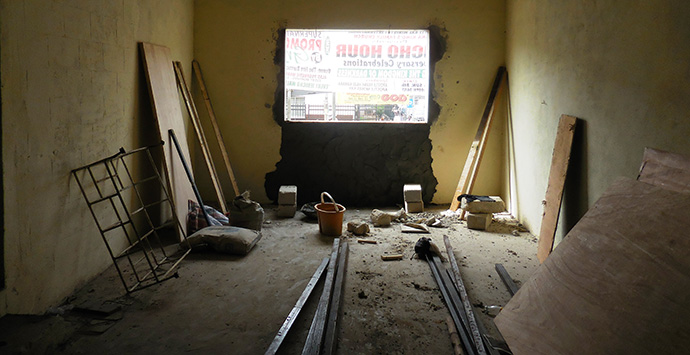 New TB clinic waiting area under construction.
New TB clinic waiting area under construction.
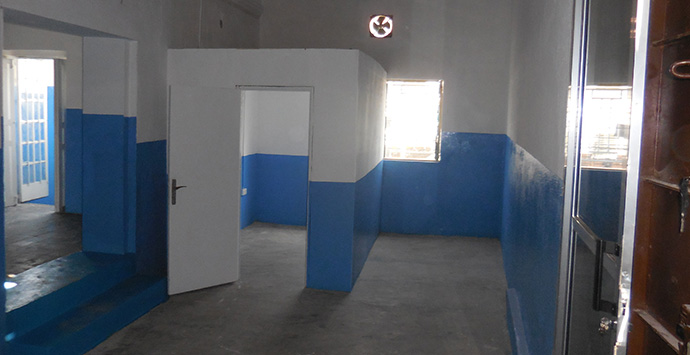 New TB clinic waiting area after construction (with Leprosy holding area).
New TB clinic waiting area after construction (with Leprosy holding area).
Our team included some of the country’s premier infectious disease specialists and dedicated staff from King’s College in London. I took their knowledge of disease transmission, incorporated it with patient and staff safety protocols and translated it all into construction drawings for the new clinics.
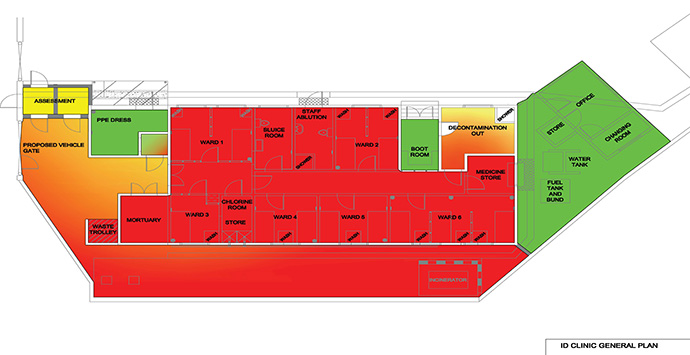 New infectious disease clinic layout with color coded hazard zones.
New infectious disease clinic layout with color coded hazard zones.
Doctors sketched the clinic’s footprint, which I converted to a visual model. Working interactively, we developed the clinic’s layout and I compiled final construction documents.
During construction, I provided management and daily inspections. With the screening hut and ID clinic complete, we could enter the red zone to assess its structural condition.
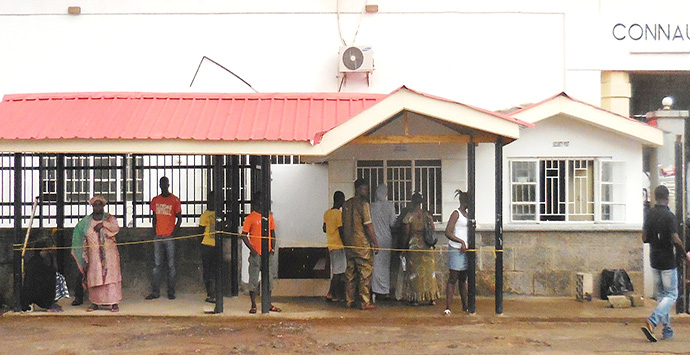 New screening hut with patients waiting for an evaluation.
New screening hut with patients waiting for an evaluation.
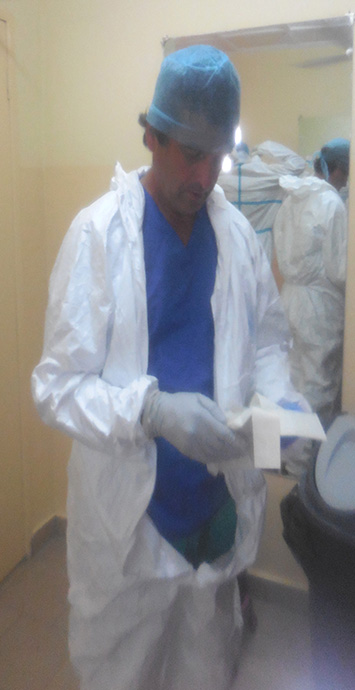 Decontamination hadn’t begun, so Gerard is shown here donning appropriate personnel protective equipment.
Decontamination hadn’t begun, so Gerard is shown here donning appropriate personnel protective equipment.
Back home, I continue to support Connaught with CAD design and construction documents. The team is currently pursuing government approval and we anticipate construction to begin in 2016. I am confident that our work will enable these communities to better fight back against Ebola, ensuring a safe and healthy future in Sierra Leone.
 Gerard Dalziel is a project manager in AECOM’s Transportation Business Line based in San Diego, California, United States. For the last 10 years, he has traveled all over the world to work on aid-related civil infrastructure projects.
Gerard Dalziel is a project manager in AECOM’s Transportation Business Line based in San Diego, California, United States. For the last 10 years, he has traveled all over the world to work on aid-related civil infrastructure projects.
LinkedIn: Gerard Dalziel






